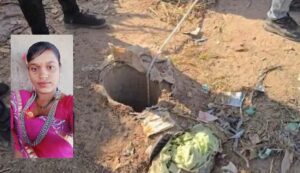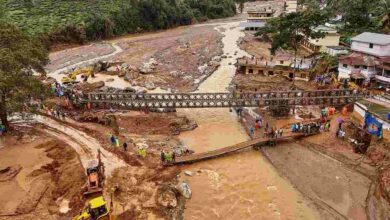An 18-year-old girl fell into a borewell in Kandarai village of Kutch district of Gujarat
Kachchh: On Monday, an 18-year-old girl in Gujarat’s Kachchh district fell into a borewell in Kanderai village. Teams from the Indian Army, the National Disaster Response Force, and the Border Security Force are now on the scene, and efforts are being made to save the girl.

The Kachchh Tehsildar, Arun Sharma, told the media report that the girl has been receiving oxygen and that the rescue squad has been keeping an eye on her whereabouts.
Early on Monday morning, an 18-year-old girl fell into a borewell.The Army, NDRF, and BSF teams are on the scene, and the girl is being rescued. We have given her oxygen, and we are keeping an eye on her whereabouts.”The rescue is in progress,” Sharma informed the media report.
There have been many reports of youngsters falling into the borewell in recent days. After almost nine days of a drawn-out and difficult surgery, a child who had fallen down a 150-foot-deep borewell in Kiratpur village, Rajasthan, was recovered; nevertheless, despite tremendous efforts, her condition worsened and she passed away from her wounds.
In December 2024, a 10-year-old kid who had been rescued from a borewell in Madhya Pradesh’s Guna district was reported to have died.
The Prince Borewell case in 2006 was one such instance that garnered a lot of media attention. Six-year-old Prince Kumar Kashyap plunged into a 55-foot-deep borewell in Haryana’s Kurukshetra district. After three days of the rescue effort, Prince was finally saved.
The Supreme Court issued rules in 2009 and 2010 to stop youngsters from falling into abandoned borewells as a result of the occurrence. In order to prevent borewells from becoming kid death traps, it mandated that the Center and the states make sure that all borewells are capped.
In 2009, the Supreme Court released rules aimed at averting similar catastrophes. The action followed the suo motu cognizance of a written petition emphasizing the concerning frequency of these instances by a bench presided over by former Chief Justice of India K G Balakrishnan.
Barbed-wire fences surrounding borewells during construction, steel plate coverings fastened with bolts over well assembly, and filling borewells from the bottom to the ground level were all required by the Supreme Court’s recommendations.
Additionally, the owner of the land or property was required to notify the relevant authorities—the district collector, district magistrate, or sarpanch—or department officials of groundwater, public health, or municipal corporations in writing at least 15 days before beginning any construction of borewells or tube wells.
All drilling agencies, whether they are private, semi-private, or government, were to be required to register.
These incidents nonetheless happened in spite of the highest court’s extensive rules, which were released on February 11, 2010, with the intention of averting similar disasters.
Even though the Supreme Court issued historic rules to avoid catastrophes involving abandoned borewells after a 15-year delay, similar instances continue to occur, which highlights the inadequacies in implementing the guidelines and increasing public knowledge of the court’s orders.





